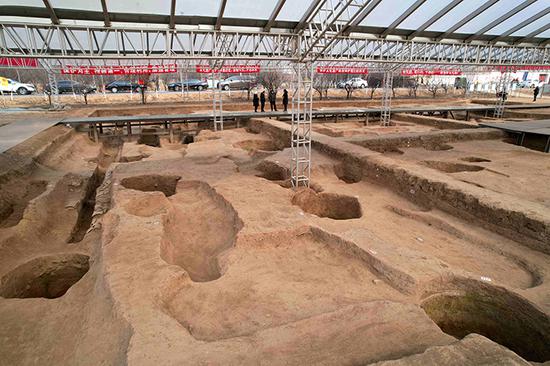
People play mahjong while cooling their feet in water to escape the heat in Chengdu, Sichuan province, on July 7, 2021, which marked the Minor Heat, a traditional Chinese solar term. (China News Service/An Yuan)
China experienced more and stronger large-scale extreme weather events last year, a report released by the China Meteorological Administration said on Tuesday.
The China Climate Bulletin said the country's average temperature last year was 10.5 C, 1 C higher than normal and the highest since 1951. Thirty-eight major weather monitoring stations witnessed record-high temperatures.
Severe droughts hit South China frequently last year, the report said. From late March to mid-December, the region's central and eastern parts had 20 percent to 50 percent less precipitation than normal.
Xiao Chan, deputy director of the National Climate Center, told a news conference on Tuesday that global warming has exacerbated the instability of the climate system and increased the atmosphere's water-holding capacity.
"Research has shown that every 1 C increase in atmospheric temperature can cause a 7 percent increase in water vapor content," he said. "Under the context of global warming, more frequent extremely heavy precipitation events occurred."
Last autumn, North and Northwest China were hit by the most rain since 1961, causing floods in the Yellow River Basin.
Zhengzhou, capital city of Henan province, experienced 201.9 millimeters of precipitation in an hour, a record for the Chinese mainland. The annual precipitation in Beijing, Tianjin and Hebei province also reached record highs, the report said.
In March last year, North China saw the strongest sandstorms in the past decade. They affected 19 provinces, regions and municipalities and reached as far as East China, including Jiangsu, Anhui and Zhejiang provinces.
Xue Jianjun, deputy director of the National Meteorological Center, said: "Last spring, major sand source areas including the Inner Mongolia autonomous region and the country of Mongolia experienced a long period of warmer days with less precipitation. Such weather provided favorable ground surface conditions for sandstorm formation."
The number of deaths and missing people due to meteorological disasters in China last year was 737, down 33 percent on the average for the previous decade. The disasters caused about 321 billion yuan ($50.8 billion) in economic losses, 5.2 percent less than the 10-year average, the report said.
"Over the years, we have been improving our forecasting and early warning service capabilities to prevent and reduce disasters," Xiao said.
Administration spokesman Song Shanyun said that as global warming has made extreme weather events and meteorological disasters more frequent, the administration is conducting research on risk mitigation.
"To ensure food safety, we can adjust the layout of grain varieties according to the effects that climate change imposes on different plantation areas," he said. "For example, more drought-resistant grain varieties should be developed in arid regions."


















































 京公网安备 11010202009201号
京公网安备 11010202009201号
